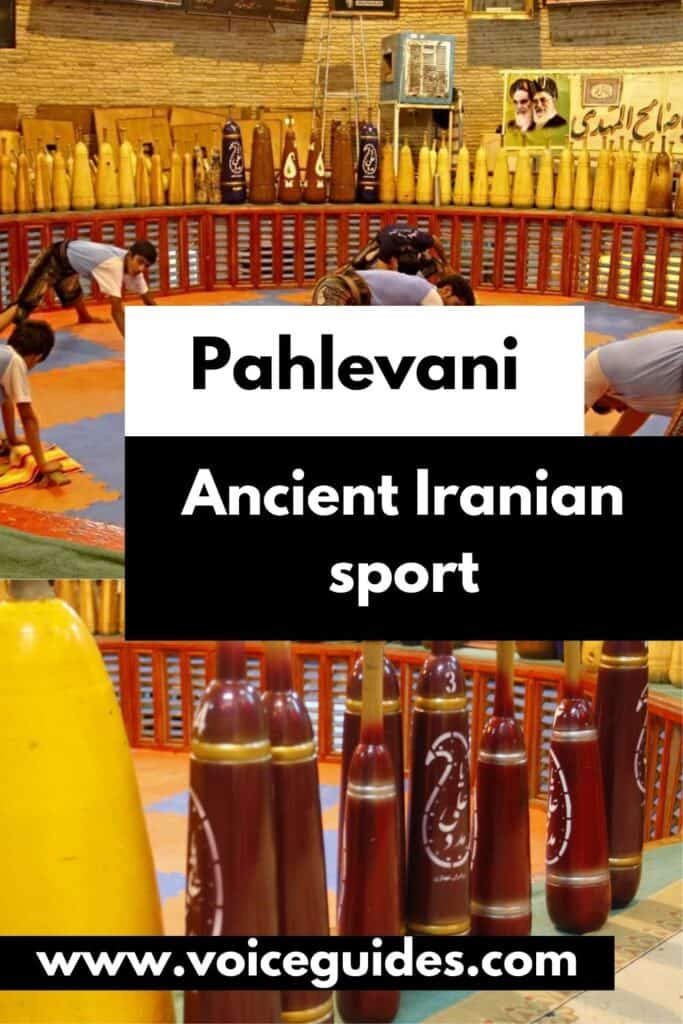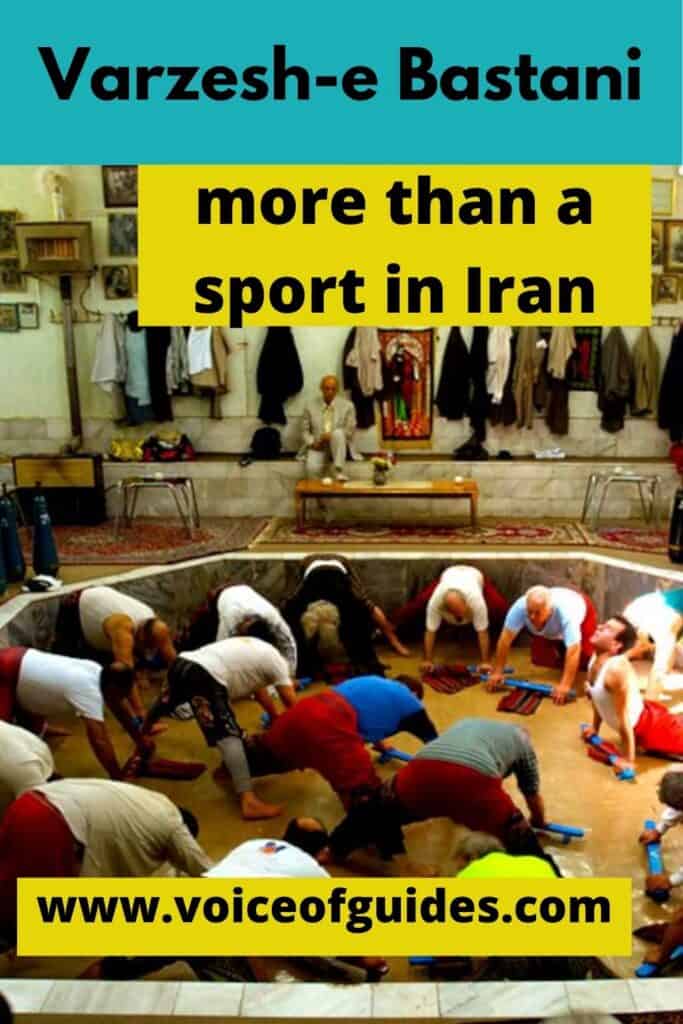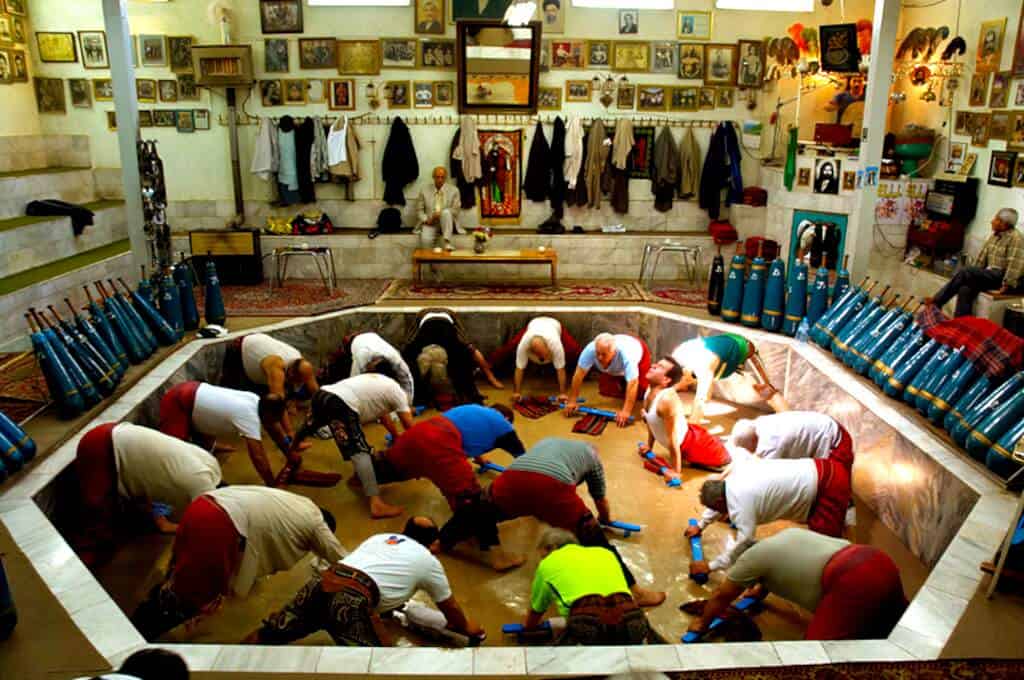Varzesh-e bastani is an Iranian sport, which at first served to train Iranian warriors. The ancient Persian wrestling was listed as UNESCO World Heritage Site as the world’s oldest form of training. It combines pre-Islamic Persian culture with the spirit of Shiite Islam and Sufism. They practice the sport in a special complex, called Zurkaneh and some of them are open to the public. Do not miss to go to a training during your visit to Iran.
Varzesh-e bastani, the ancient Persian sport
It has two names: varzesh-e bastani, meaning “ancient sport”, and varzesh pahlevani, meaning “heroic sport”. Pahlevani is an exciting combination of martial arts and fitness training, during which they recite texts to glorify Ali and strengthen their faith in Shiite Islam. All that accompanied by music. It is also popular in Azerbaijan and Iraq from the mid-19th century until the 1980s. Recently, it has also become more widespread in neighboring countries.
Traditional wrestling dates back to ancient Persia. The famous Persian epic mythological hero of Shahnameh practiced it. The original goal was to train warriors who would start their fight like true patriots with a sense of national pride.
The training rituals
Each training follows a special ritual. The wrestlers pray to the Prophet Mohammed and his family and recall well-known Persian mythological stories, all this accompanied by music.
Athletes are standing in a circle performing gymnastics to the play of drums. They go one after the other to the center and conduct warm-up gymnastic exercises. They are spinning at an awful speed until they feel so dizzy that their companions have to grab them before falling on the ground. Then comes the next one. After that, they take heavy wooden rackets, metal shields, and bow-shaped iron weights in their hands, which they swing high above their head at the beat of the drum in complete harmony. I also tried to lift one, and I can say it was unbelievably heavy. It requires tremendous physical force to swing from one side to the other over their heads. It is only a spectacular warming-up before the actual sport that is nothing else than wrestling. All that explains why Iranian wrestlers and weightlifters are so successful in international competitions.
A senior member of the group, the “morshed,” leads the prayers, quotes from the famous Persian epic, the Shahnameh, and recites texts that glorify Shiite imams. The athletes repeat the texts. The songs used to convey moral, social, and religious teachings to the warriors according to which an ideal athlete is pure, honest and gentle, and only his body is strong. The ancient Zoroastrians believed that physical and mental strength supported spirituality.
Athletes previously had to enter the arena barefoot and naked upper body. It symbolized there is no hierarchy or discrimination between them. After the Islamic Revolution, it became mandatory to wear a T-shirt. It was not allowed to eat, drink, smoke, laugh, and talk inside the arena. Until the 1920s, they trained in the morning, except during Ramadan, when they switched to after sunset. Since then, evening training has become commonplace.
The place where the Varzesh-e bastani training takes place, the Zurkhaneh
They practice ritual gymnastics exercises in a domed structure, called Zurkhaneh or “House of Strength”.
The arena itself is a 1-meter deep circular or octagonal sunken area. Everybody enters through a small door to automatically bow as a sign of respect for everyone. Spectators and musicians surround the arena that was initially constructed with scrub wood, ash and covered with a layer of clay to provide soft ground for the athletes. Later, they replaced it with wooden floors or linoleum. The House of Strength was always financed from public donations, and the athletes never had to pay. Today, there are about 500 located throughout Iran.
When the Arabs conquered Persia in 637, the Zurkhaneh served as a secret meeting place for knights to maintain patriotic spirituality. After the spread of the Shiite and more spiritual Sufi trend of Islam, the training included philosophical and spiritual elements and religious hymns. Ali, the cousin and son-in-law of the Prophet Muhammad, considered by the Shiites as their first imam, became the patron of the Zurkhaneh. The portrait of Ali appears in the House of Strength alongside images of saints and famous athletes.
The role of Pahlevani in Iran
Pahlevani became particularly popular during the reign of the Qajar in the 19th century, when they held competitions in the shah’s court on March 21 of each year, during the Nowruz celebration of the Persian New Year. It lost its importance in the 1920s because the first Pahlavi ruler, Reza Shah, considered this tradition the undesirable legacy of the Qajar dynasty. In contrast, his successor, Mohammad Reza Pahlavi was notoriously trying to emphasize ancient Persian roots as a counterpoint to firm Islam-based thinking. He revived tradition and himself pursued the traditional sport of varzesh-e bastani.
In the 1940s, Iran Radio began to broadcast the Zurhkaneh rituals in the mornings so that amateurs could also practice at home. The Iranian revolution of 1979 swept away the rule of Shah Mohamed Reza Pahlavi, and under the leadership of Ayatollah Khomeini, a republic based on strict Islamic principles was formed. The new Islamic regime rejected all pre-Islamic practices, including ancient Iranian wrestling. It didn’t last long because the Islamic Republic eventually declared it a symbol of Iranian pride and culture. At the same time, women were banned from watching any sport performed by men, including traditional Iranian wrestling.
Where can you find a Zurkaneh to watch the Persian wrestling?
If you are traveling along the main touristic itinerary of Iran, Yazd will be a good place to watching the training of the ancient Iranian wrestlers. The Saheb-a Zaman Zurkhaneh near the Amir Chakhmaqh complex lets tourists come to see their training.
Open: Saturday- Thursday (shows at 5pm, 6.30pm and 8pm)
Entrance fee: 200,000 INR
Have you ever seen this ancient Persian wrestling? Share your experience.
Do you plan to go to Iran? Pin it for later!





